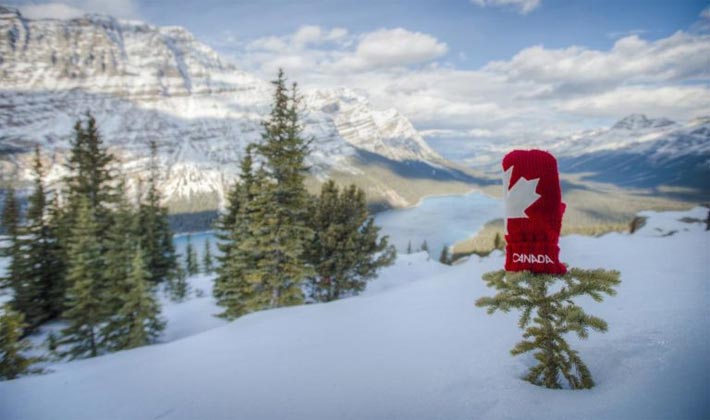Weather. It’s everyone’s favourite topic of conversation in Canada and, while winter doesn’t officially join us until December 21, there have already been traces of winter across the country. As Canadians, we often joke, “Don’t like the weather? Wait 10 minutes and it’ll change.” However true or false that may be, and however much or little you love winter, you always want to be prepared. During the winter season, there are challenges to navigating the ever-changing winter conditions, the demand of holiday parties, and seasonal physical activities that you haven’t done since, well, last winter. All this amounts to one question that Canadian Certified Pedorthists hear a lot, “What do I wear on my feet?”

Get an Assessment
Canadian Certified Pedorthists (C. Ped (C)s) are foot orthotic and footwear experts trained to assess the function of lower limb (feet and legs) anatomy and biomechanics. As C. Ped (C)s, we work with our clients to determine the best solutions for their needs. The first step in the assessment is always to take a thorough history; this includes determining your seasonal needs. Maybe you’re retired and spend the winter months in Arizona. Perhaps you spend every weekend on the black diamond slopes, are a regular at the local outdoor ice rink or can’t wait to try snowshoeing for the first time. Or, are you like many of my clients, friends, and family who want to enjoy winter but have a fear of falling and breaking something? That fear alone is warranted; thousands of Canadians visit the ER every winter due to slipping on ice. The initial assessment will help your C. Ped (C) gauge your winter footwear needs.
Traction for your winter footwear is like that of the tires on your car. Factors that affect traction include weight, coefficient of friction (the amount of friction holding two surfaces together), and slip. When my clients, friends or family ask what they can do to increase traction and decrease the risk of falling there are a couple of things that I recommend.
- Work on improving balance, strength, and flexibility in safe environments like the fitness studio, a physiotherapy clinic or your home. These elements of long-term exercise and fitness play a key role in reducing injury or recovering from injury.
- Do your research when it comes to winter footwear. Just because it’s labeled a winter boot doesn’t mean it will hold up to environment’s specific conditions. A company based out of Toronto has been working on a protocol for testing and a standardized rating system for slip resistant footwear. You can check out their annual ratings at ratemytreads.com.
- Invest in a pair of over-the-shoe cleats for added traction. Be sure to remove them before stepping into a building, as they can be as problematic as walking on ice if you try using them on tile floor.
Do’s and Don’ts of Winter Foot Care
Falls aren’t the only winter woes to avoid when it comes to your feet. Here are some other DO’s and DON’Ts to get you started as you prepare to maximize the benefits of the Canadian winter:
DON’T cram your feet into tight-fitting winter boots.
DO make sure there is space around your toes for air to circulate. Your body heats that air and keeps your toes roasty-toasty warm.
DON’T wear wet or sweaty socks or footwear outside.
DO change to dry socks and shoes if you need to go out again.
DON’T wear your hard-soled shoes in cold, icy conditions.
DO choose footwear with out-soles (the part that comes in contact with the floor) that still have some give or elasticity in icy, cold conditions.
DON’T assume last year’s winter footwear will still fit and do the job this year. This is important for kids and adults alike.
DO check the fit and condition of your boots, skates, and ski boots. Check inside the footwear to make sure nothing accidentally fell inside of them while in storage.
DON’T change your running or walking form too much. Many people get too cautious, stiffen up, and cause overuse injuries.
DO reduce your pace and shorten your stride. Take corners as slowly as necessary and try your best to relax.
DON’T wear your stiletto sandals to the holiday party, unless you can be dropped off at the door.
DO have a change of footwear with you whenever possible. Many event spaces have a cloakroom where you can change and store your shoes.
Whether you live and breathe for Canada’s six months of winter or can’t wait for the tulips to pop up again, stay tuned through the month of December as we’ll be sharing more stories, tips, and articles that will get you through winter with happy feet. Are you interested in finding out more about what Canadian Certified Pedorthists can do for you and your family right now? Visit https://pedorthic.ca/ or follow Pedorthic Association of Canada on Facebook.
By Jaime Nickerson C. Ped (C), B.Sc. (Kin), Dip Pedorthics
